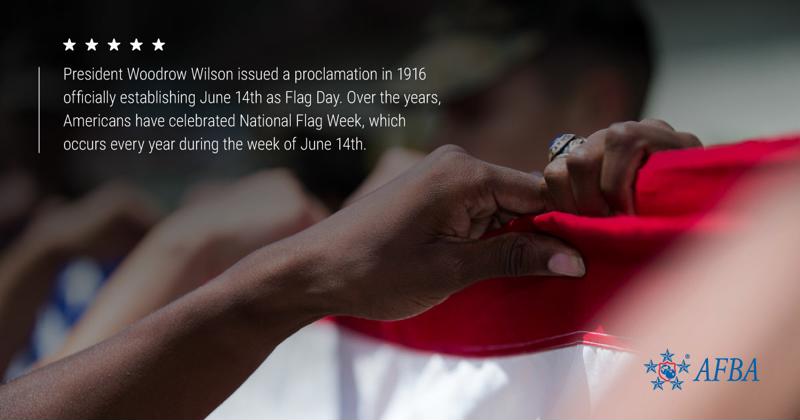June 14, 2019 represents both the 244th birthday of the U.S. Army, and the 242nd birthday of the U.S. flag.
The Second Continental Congress officially adopted the original flag of the United States on June 14, 1777, exactly two years after the Congress created the Continental Army to fight Great Britain in the Revolutionary War.
President Woodrow Wilson issued a proclamation in 1916 officially establishing June 14th as Flag Day, and thirty years later, National Flag Day was established by an Act of Congress. Though not a federal holiday, Americans continue to observe the creation of the Stars and Stripes, and over the years, this has led to the celebration of National Flag Week, which occurs every year during the week of June 14th.
In 2019, June 14th falls on a Friday, and National Flag Week runs from June 9th to 15th.
History of the U.S. flag and National Flag Week
The Flag Resolution passed by Congress in 1777 specified that "the flag of the thirteen United States be thirteen stripes, alternate red and white; that the union be thirteen stars, white in a blue field, representing a new constellation."
No arrangement of the stars was specified, so the maker of the flag was left to decide how to orient them, with some choosing to place the stars in a row and others opting for a circular layout that is today recognized as the "Betsy Ross design."
According to Military Benefits, American troops first carried the flag into war three months after the resolution at the Battle of the Brandywine. A year later, U.S. forces took over a British fort, marking the first time that the flag was hoisted over a vanquished foe.
However, the idea of devoting a day of celebration to the flag did not start to gain traction until over a century later.
It was in 1886 that Bernard J. Cigrand, a grade school teacher in Waubeka, Wisconsin, made his first public proposal for an annual observance of the birth of the flag. Cigrand's advocacy led to some of the first June 14th Flag Day celebrations.

President Harry S. Truman signed legislation in 1949 that designated June 14th as Flag Day and the week surrounding it as National Flag Week. In 2004, Congress voted unanimously to recognize Flag Day as having originated in Ozaukee County, Waubeka, Wisconsin.
Every year, National Flag Week begins with the sitting President making a proclamation declaring the week of June 14 as the official observance of the holiday and directing government officials to display the flag in government offices. The Presidential Proclamation also requests that U.S. citizens participate by flying the flag at residences and local businesses.
Celebrating National Flag Week can be as easy as hoisting Old Glory at your home or workplace, though there may also be parades or other celebratory events happening in your local community.
Fairfield, Washington claims to be home to the oldest continuing Flag Day parade, having held a parade every year since 1910, and celebrating the centennial of the parade in 2010. Appleton, Wisconsin, has held its own National Flag Day parade since 1950, and Quincy, Massachusetts, has had a similarly long-running parade since 1952.
When privately observing National Flag Week, you should be sure to follow proper flag etiquette. The Flag Code formalizes many traditions, including making sure that no part of the flag touches the ground or any other object when being lowered, as well as neatly and ceremoniously folding and storing the flag. There are also special rules for how the flag should be displayed indoors and outdoors.
With National Flag Day and the U.S. Army birthday both taking place on June 14th, there is no shortage of anniversaries for patriotic Americans to celebrate this time of year.


